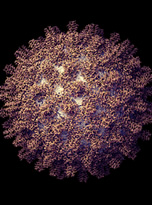Read and report vaccine reactions, harassment and failures.
Hepatitis B Disease & Vaccine Information

Hepatitis B: The Disease
Hepatitis B (HBV) is a viral infection that infects the liver and occurs largely in adults with infection transmitted through sexual contact, sharing of needles, syringes and other drug injection equipment. Most acute infections last a few weeks and do not become chronic. Some cases can last 6 months or longer, become chronic, and lead to liver cancer and death. Recovery from acute hepatitis B infection provides lifetime protective immunity.
Symptoms of hepatitis B generally appear in 90 days and last a few weeks, and between 30 and 50 percent of infected adults and children over the age of five will have symptoms, while many children under the age of five will not. Transmission of infection from mother to child during birth is rare now that prenatal screening is conducted in all U.S. states. Symptoms of acute hepatitis B include fever, fatigue, loss of appetite, nausea, vomiting, abdominal pain, dark urine, discolored (clay) bowel movements, joint pain and jaundice (yellowish skin or eyes). Learn more about Hepatitis B…
Hepatitis B Vaccine
There are six recombinant hepatitis B vaccines and one adjuvanted hepatitis B vaccine approved by the FDA in the U.S. The CDC recommends that all infants be vaccinated with three doses of hepatitis B vaccine by six months of age with the first dose given within 24 hours of birth to prevent transmission by an infected mother to her newborn, and the last dose should not be administered before 24 weeks of age. The CDC also recommends hepatitis B vaccination for adults under 60 years of age. Learn more about Hepatitis B vaccine…
Hepatitis B Quick Facts
Hepatitis B
- In the U.S., hepatitis B is primarily an adult disease, with most cases occurring in persons between 40 and 49 years of age. The virus can also be transmitted from an infected mother to her newborn baby. Newborn infections are uncommon in the U.S. with screening during pregnancy helping to determine risk of infection to the baby and treatments available to mother and child.
- Populations at highest risk for infection include illegal IV drug users, prostitutes, men who have sex with men, individuals with multiple sexual partners, and people receiving hemodialysis. Healthcare workers exposed to infected blood or bodily fluids of patients through contact with needles or medical devices used on patients, or when breaches in proper hygiene and/or infection control practices occur, are also at high risk for becoming infected.
- Worldwide, hepatitis B is the cause of up to 80 percent of liver cancer and an estimated 820,000 people die each year from acute or chronic hepatitis B, and is historically endemic in Asia and Africa. Prior to U.S. vaccination campaigns introduced in 1991, hepatitis B was not prevalent in the U.S., with only 18,003 cases of hepatitis B reported, representing .00007 percent of the total U.S population. Continue reading quick facts…
Hepatitis B Vaccine
- There are six recombinant hepatitis B vaccines approved by the FDA for use in the U.S.: Engerix-B; Recombivax HB; PREHEVBRIO; Twinrix (combined with hepatitis A); Pediarix (combined with diphtheria and tetanus toxoids, acellular pertussis adsorbed, and inactivated poliovirus); and VAXELIS (combined with diphtheria and tetanus toxoids, acellular pertussis adsorbed, Haemophilus b conjugate, and inactivated poliovirus) The seventh is Heplisav-B, a recombinant adjuvanted vaccine.
- The primary reason that the CDC recommended hepatitis B vaccination for all newborns in the United States in 1991 is because public health officials and doctors could not persuade adults in high risk groups (primarily IV drug users and persons with multiple sexual partners) to get the vaccine.
- Using the MedAlerts search engine, as of the March 29, 2024 data release, there have been 106,950 adverse events reported to the federal Vaccine Adverse Events Reporting System (VAERS) in connection with hepatitis B containing vaccines. Nearly 56 percent (58,862) of reported serious hepatitis B vaccine-related adverse events occurred in children under 3 years old, with over 70 percent (1,733) of deaths occurring in children under three years of age. Out of the reports in VAERS there were 2,374 related deaths, 16,332 hospitalizations, and 3,738 related disabilities. Continue reading quick facts...
NVIC encourages you to become fully informed about Hepatitis B and the Hepatitis B vaccine by reading all sections in the Table of Contents below, which contain many links and resources such as the manufacturer product information inserts, and to speak with one or more trusted health care professionals before making a vaccination decision for yourself or your child. This information is for educational purposes only and is not intended as medical advice.



